| On August 4th we made our last trip into Yosemite Valley. This was to head south and visit the glade of giant sequoia trees in Mariposa
Grove right by the southern entrance to the park. The practice was not so
good as the theory since when we got there only vehicles under 22ft were
allowed. We were sent back five miles and told to catch the bus shuttle.
Fair enough but we arrived back where the shuttle left to find little
parking and a coachload of French. Now the French do not know how to queue
(not their only failing!) and we didn't make it on the first bus and they
only ran at half hour intervals. | 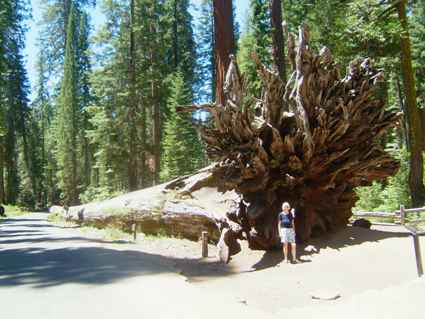 |
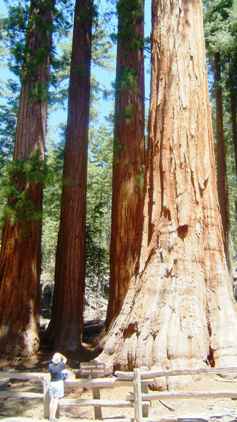 | Eventually we
arrived at the grove and there are a number of spectacular trees. The one
above is called the Fallen Monarch, and it lies just where it fell over in the late 1800s. This is the one they photographed
with a troop of cavalry on their horses stood on the top in 1899. Before the
National Parks Service was formed in 1936 the Park was administered by the
army. The trees are impressive by any standards - height, circumference,
age, etc. There are taller trees but I can't tell the difference once they get
over 300ft. This group is known as the Bachelor and the Three Graces. |
| What was surprising is how little foliage they have for such large trees. This is very unlike the old trees we are used to which have huge
canopies. The root system is also shallow. One can understand them reaching
such a great age because they must grow very slowly. This tree is known as
the Grizzly Giant and is thought to be 2,700 years old. | 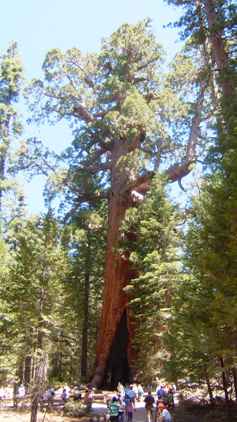 |
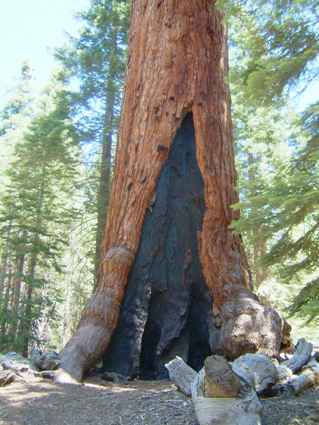 | The bark is
exceptionally thick and is often damaged, as in the triangle shape at the
bottom here, by fire. Fire is now understood to play an integral part in
the lifecycle of these trees, both in clearing the undergrowth to allow
seeds to germinate and grow, and in
ripening the cones.
|
| When they were first discovered by the early settlers they were
thought of as a great resource for logging. But when they are felled, they
tend to shatter so in the end they were not regarded as highly as some of
the other trees. Thus we still have a few left today. | 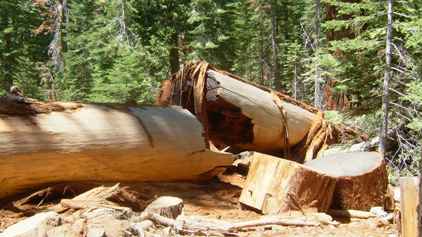 |
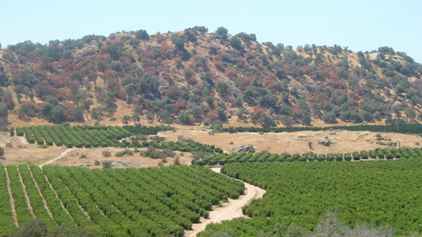 | We travelled south
and west from Yosemite but had a few days to spare before my brother arrived
and we had to meet him on the California coast. So we took a detour up to
Kings Canyon and Sequoia National Parks. To get there we
passed through the San Joaquin Valley which is the heart of the California
fruit industry. This shot was just on the edge as we climbed from the valley
floor back up to 6000ft for the national parks. Without irrigation this area
would be a desert. |
| There was also considerable atmospheric pollution reducing
visibility quite markedly. Although we are still several hundred miles from
Los Angeles the effect of the car and people is quite apparent. | 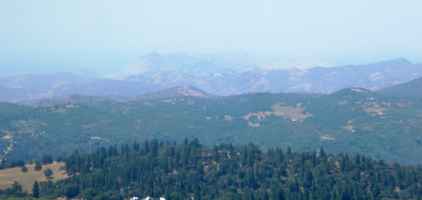 |
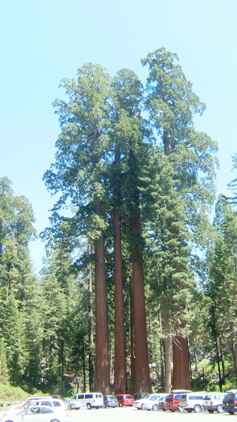 | At the end of the
car park in Kings Canyon National Park, at Grant Grove Village, is a group of
Sequoias known as the Happy Family. When you look at them towering above the
cars you begin to grasp just how huge these trees are. |
| Sequoias are fairly distinctive when you look upwards and see how
few leaves they have for the size of the trunk. | 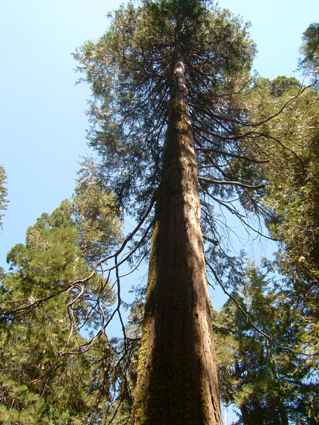 |
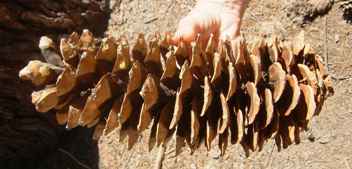 | We did find a cone which Jan is holding. These are not small
cones as you can see!. They take between 20 and 30 years to mature on the
tree, and require fire to make them dry out and open enough to release the
seeds. |
| We did wonder how such a small canopy supported such a tree.
However the younger trees have much more foliage. Since they discovered the
importance of fire in the life cycle in the early 1960s and changed the
policy of suppressing all fires, there have been more young trees. There are
still relatively few though, even in the areas where they do grow. There are
now only 75 where trees still grow although there are
fossil remains at other sites. Only 8 lie north of Kings river spread over 200 miles. The rest are in the 60 miles to the south.
They are all between 5000 and 7000 ft above sea level. Their range shrunk about 2.5 million years ago when the climate became drier. |  |
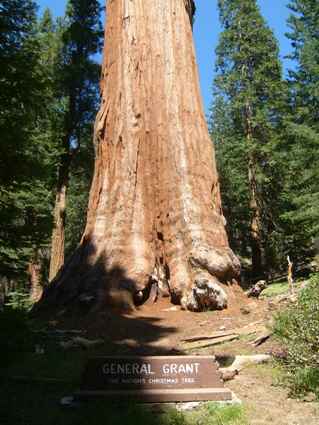 | This is the
General Grant Tree. It is the third largest living thing on earth. It has
the largest base diameter of any sequoia at 40.3 feet which is 3.5 feet
larger than the General Sherman which is the largest tree, but tapers to
only 29 feet at breast height (the standard point of measurement). It is as
tall as a 27 storey building and weighs more than 700 cars. (The Americans
love their statistics.) It was proclaimed as the Nation's Christmas Tree by
President Calvin Coolidge in 1956 having been first discovered in 1862. |
| Here we have
another grouping. There were more trees in this grove than in the whole of
Mariposa Grove in Yosemite which made it much more interesting. There is
another grove on Redwood Mountain just to the south of here which cannot be accessed by the public which has about 15,800
Sequoias over 1ft in trunk diameter (in 3100 acres) This was on the road to the Sequoia National Park. But
we didn't go that way because although the road looked fairly good and
straight on a standard road atlas, the park ranger showed us what it was actually like
on a much larger scale map, with steep slopes
and hairpin bends. Vehicles longer than 22 feet were banned. | 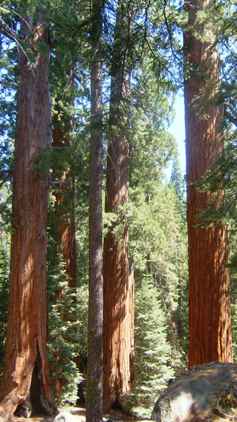 |
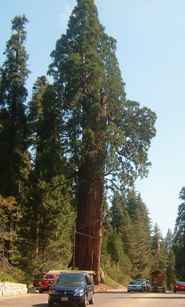 | So we departed
back down the road we came on (for over 60 miles). The tree guarding the
entrance is another Sequoia and you can see how the trunk maintains its
girth well up into the foliage. |
| We started to get funny noises coming down to the coast and so we
had to stop and investigate. One of the rear brake pads had shed its lining.
We ended up having to replace both back and front brakes. Not a cheap job
but not unduly surprising given the mileage the RV has covered. | 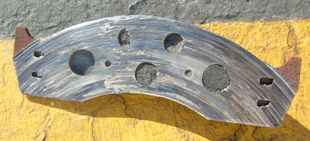 |
|